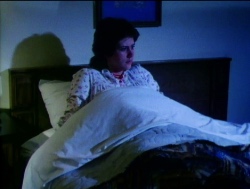
 Made for television just before the disaster subgenre began to collapse, Mayday at 40,000 Feet! — exclamation theirs — is as you would expect: a transparent wannabe member of the Airport franchise. Robert Butler, who later directed a bigger-budgeted plane-in-peril flick in 1997’s Turbulence, certainly works Mayday’s soapy suds into a lather.
Made for television just before the disaster subgenre began to collapse, Mayday at 40,000 Feet! — exclamation theirs — is as you would expect: a transparent wannabe member of the Airport franchise. Robert Butler, who later directed a bigger-budgeted plane-in-peril flick in 1997’s Turbulence, certainly works Mayday’s soapy suds into a lather.
On the film’s L.A.-departing flight in question, the cockpit is chock full o’ chaos. The pilot (David Janssen, Two-Minute Warning) is distracted AF with his possibly cancerous wife (Jane Powell, The Female Animal) undergoing breast surgery. The co-pilot (Christopher George, Enter the Ninja) is distracted AF after spontaneously proposing to an old flame (Margaret Blye, The Entity) among the clouds after reconnecting during the Salt Lake City layover. And the navigator (“Dandy” Don Meredith, Terror on the 40th Floor) is distracted AF by the sexy new stewardess (Airport 1975 stew Christopher Norris), even though the guys note, “she still has her baby fat.” More attentive to measurements than coordinates, he and his acts of sexual harassment make a great case for a retitling of Horny at 40,000 Feet!
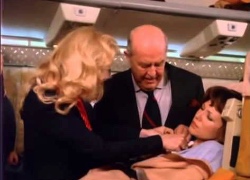 And yet, the crew cries “Mayday!” after a handcuffed prisoner (Marjoe Gortner, Earthquake) manages to wrestle the gun from the old, crusty, heart attack-prone U.S. Marshal (Broderick Crawford, The Private Files of J. Edgar Hoover) escorting him to NYC, and promptly puts a bullet through a couple of people, as well as the lavatory wall. Oh, if only an alcoholic asshole doctor (Ray Milland, Cave In!) were aboard!
And yet, the crew cries “Mayday!” after a handcuffed prisoner (Marjoe Gortner, Earthquake) manages to wrestle the gun from the old, crusty, heart attack-prone U.S. Marshal (Broderick Crawford, The Private Files of J. Edgar Hoover) escorting him to NYC, and promptly puts a bullet through a couple of people, as well as the lavatory wall. Oh, if only an alcoholic asshole doctor (Ray Milland, Cave In!) were aboard!
Adapted from Austin Ferguson’s novel Jet Stream, the efficiently entertaining telepic greatly benefits from Gortner’s crazed performance, closely lifting it to the theatrical atmosphere in which it wants to be. (Although I’m uncertain how Butler snuck Gortner’s uttering of the N-word past CBS’ standards and practices.) Mayday shows its seams most whenever the camera moves about the cabin, as the aircraft appears to house maybe 20 passengers. Its prime-time conception further reveals itself in external shots of the fuselage, where the production half-assedly added the fictional Transcon Airways brand with such inconsistent kerning, it reads “T R A N SCON.” Perhaps some foxy flight attendant walked by? —Rod Lott

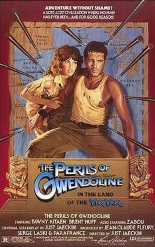
 French pervert Just Jaeckin must’ve gotten a museful erection while watching
French pervert Just Jaeckin must’ve gotten a museful erection while watching 


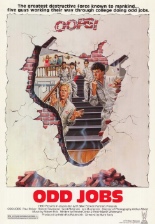
 After ill-fated summer gigs caddying, waiting tables and selling nuclear vacuum cleaners door to door, four guys join fellow frat bro Max (Paul Reiser) in the moving business, in
After ill-fated summer gigs caddying, waiting tables and selling nuclear vacuum cleaners door to door, four guys join fellow frat bro Max (Paul Reiser) in the moving business, in 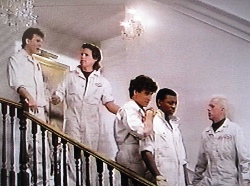
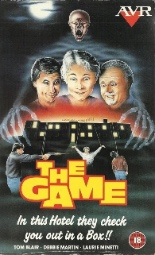
 In Bill Rebane’s accidentally entertaining
In Bill Rebane’s accidentally entertaining 